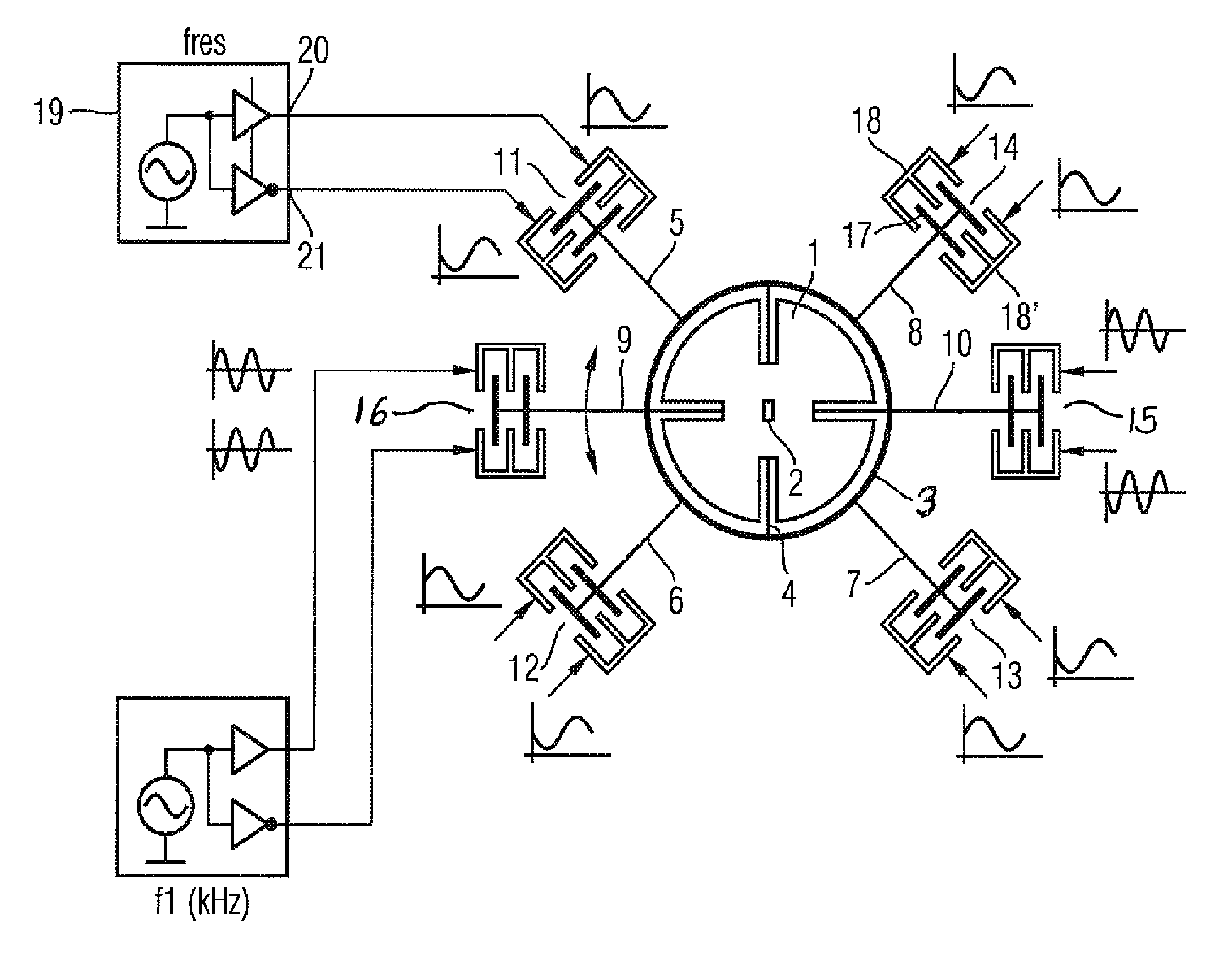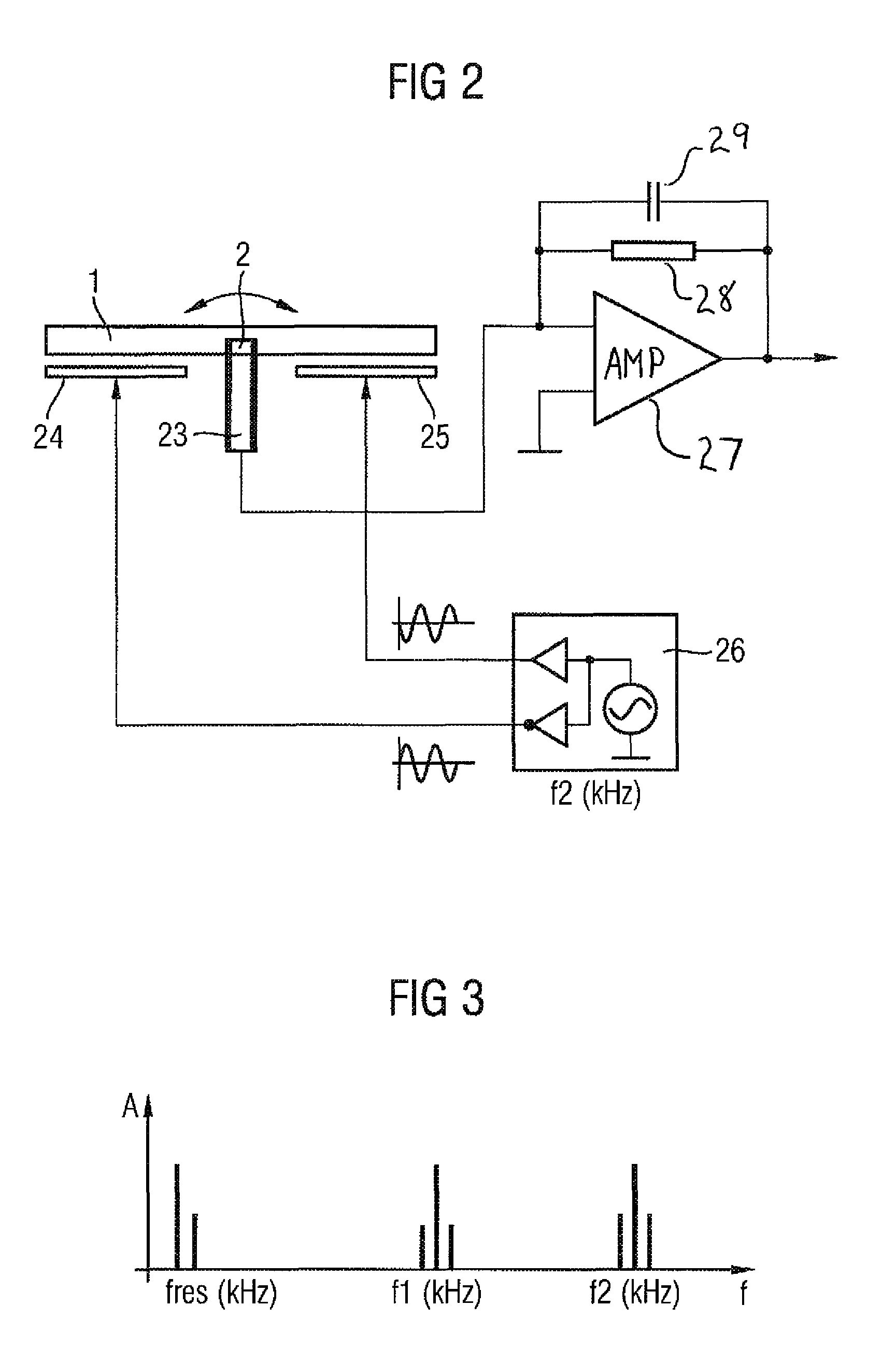Arrangement for measuring a rate of rotation using a vibration sensor
a technology of vibration sensor and rate of rotation, which is applied in the direction of acceleration measurement using interia force, turn-sensitive devices, instruments, etc., can solve the problems of considerable interference in the output signal to be determined the rate of rotation, impair the measurement accuracy, etc., and achieve the effect of reducing the interference caused by the excitation voltag
- Summary
- Abstract
- Description
- Claims
- Application Information
AI Technical Summary
Benefits of technology
Problems solved by technology
Method used
Image
Examples
Embodiment Construction
The vibrational gyroscope illustrated in FIG. 1 comprises a disk 1 which is mounted such that it can be tilted at 2 but cannot be rotated. A ring 3 is connected to the disk 1 via resilient tongues 4 in such a manner that it can be made to vibrate rotationally with respect to the disk 1.
A plurality of arms 5 to 10 having capacitive elements 11 to 16 are situated on the circumference of the ring 3. In the schematic illustration according to FIG. 1, the arms 5 to 10 are illustrated in lengthened form in comparison with an exemplary embodiment. The capacitive elements 11 to 16 each comprise electrodes 17, which are arranged on the arm and can therefore be moved with the ring 3, and fixed electrodes 18, 18′.
The fixed electrodes 18, 18′ are applied, such that they are insulated, to a substrate (not illustrated) that integrally includes elements 1 to 17. Methods for patterning the substrate are known in the art and do not need to be discussed in any more detail in connection with the inven...
PUM
 Login to View More
Login to View More Abstract
Description
Claims
Application Information
 Login to View More
Login to View More - R&D
- Intellectual Property
- Life Sciences
- Materials
- Tech Scout
- Unparalleled Data Quality
- Higher Quality Content
- 60% Fewer Hallucinations
Browse by: Latest US Patents, China's latest patents, Technical Efficacy Thesaurus, Application Domain, Technology Topic, Popular Technical Reports.
© 2025 PatSnap. All rights reserved.Legal|Privacy policy|Modern Slavery Act Transparency Statement|Sitemap|About US| Contact US: help@patsnap.com



